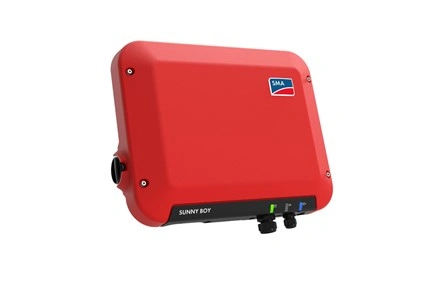The inverter should be installed in a location that is not too dusty and allows for proper heat dissipation. A cramped, poorly ventilated utility closet or a barn filled with hay is not ideal. A cool garage, on the other hand, is a perfect spot. While attics can get warm in summer, they are still a suitable option since solar panels reduce direct sunlight exposure on the roof.
Electrical cables always have some resistance, which leads to minor energy losses. This applies to both the DC side (direct current) and the AC side (alternating current). To minimize these losses, it's best to keep the cable route from the solar panels to the inverter and then to the electrical panel as short as possible.
Depending on the electrical design of the system, the voltage on the DC side can be higher than on the AC side. A higher voltage allows for more power to be transmitted with a lower current (since P = I x U). Lower current results in less energy loss through the cables. This is why placing the inverter closer to the electrical panel can be beneficial—ensuring that the cables with the most potential energy loss remain as short as possible. If longer distances are unavoidable, using thicker cables helps keep resistance within acceptable limits.

This system currently produces 2000 Watts. On the DC side that means 4 Amps of current, but on the AC side: 9 Amps. More current means more loss on the cable; therefore a shorter AC path can be beneficial
On the AC side, the so-called 'voltage drop' also plays a role. If your mains voltage is high and the resistance between the distribution board and the inverter is also high, then the high voltage can cause the inverter to disconnect. A shorter and/or thicker AC cable can reduce this problem.
Modern inverters produce very little noise. Smaller models operate almost silently, while larger ones may have a cooling fan that activates in warm temperatures, causing a soft humming sound. This noise is most noticeable in the afternoon when the solar panels are generating peak power.
For this reason, it's important to place larger inverters where people won’t be disturbed by the sound. Installing an inverter in a bedroom is not advisable. While it remains silent at night, it starts operating early in the morning during summer, and light sleepers might wake up from the clicking sound of the relay as it turns on.

The best location for an inverter is a well-ventilated, dust-free space that allows for efficient heat dissipation. It is often preferable to place the inverter as close as possible to the electrical panel to reduce energy loss. Additionally, noise considerations should be taken into account when choosing a location.
Because finding the perfect spot can be challenging, we always recommend scheduling a consultation. Our experts can assess your specific situation and determine the ideal placement for your inverter.